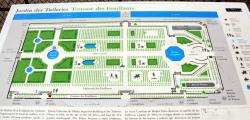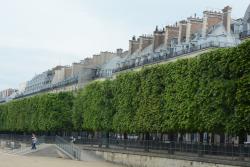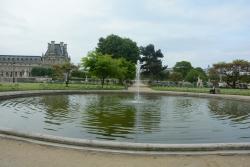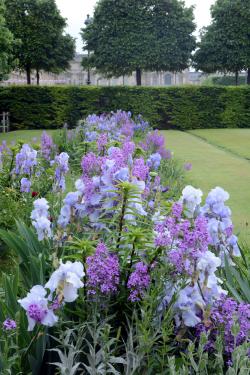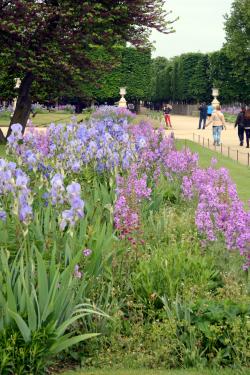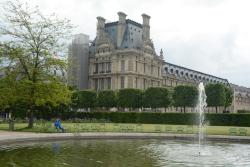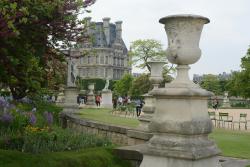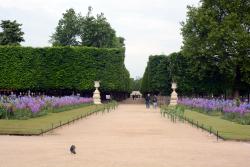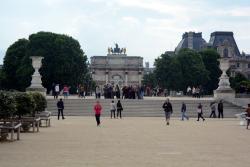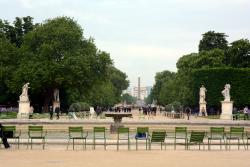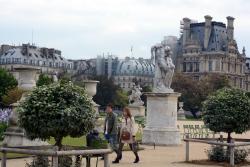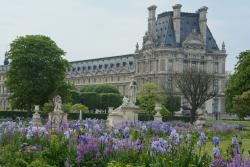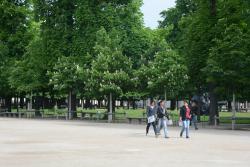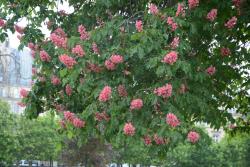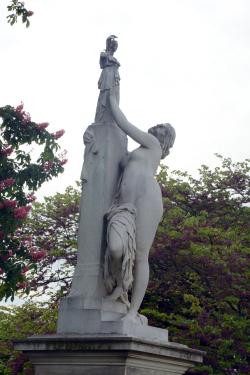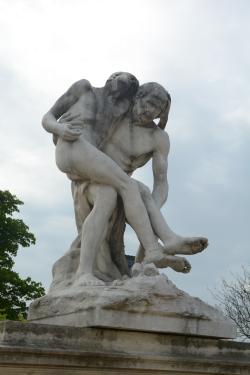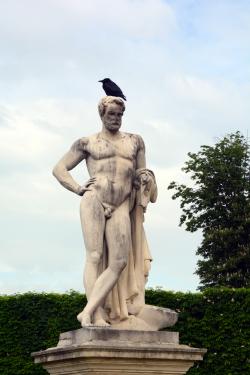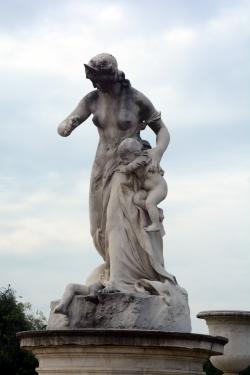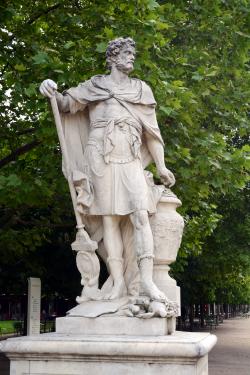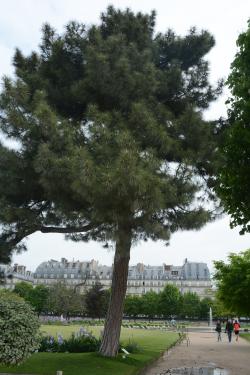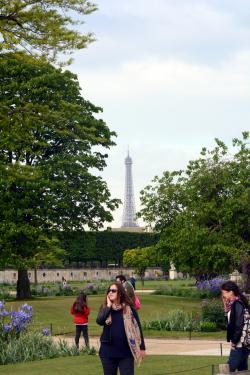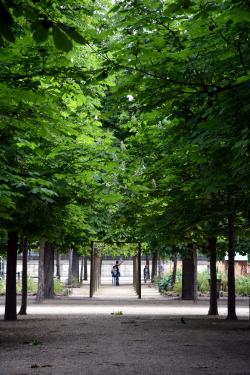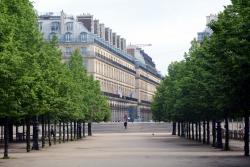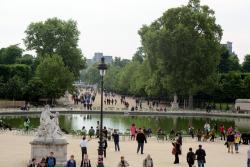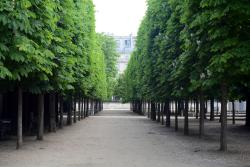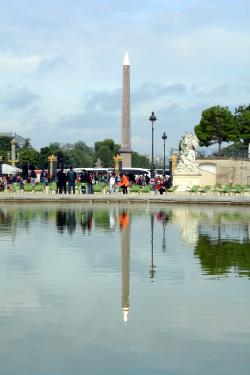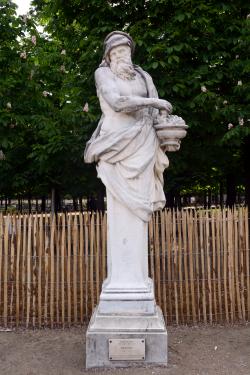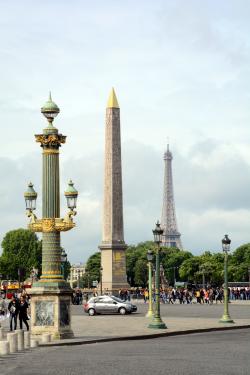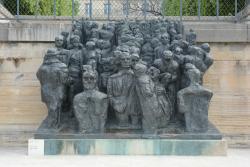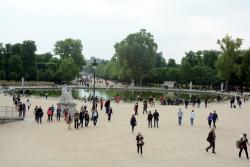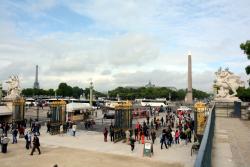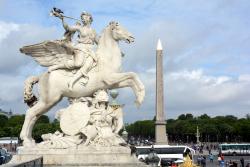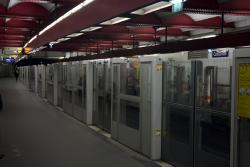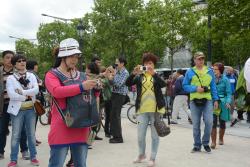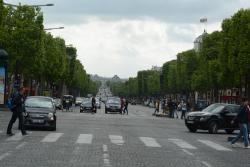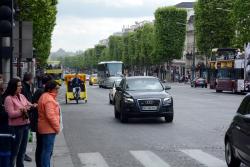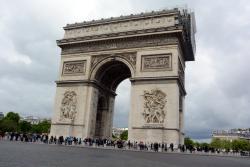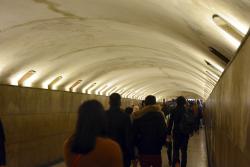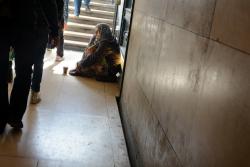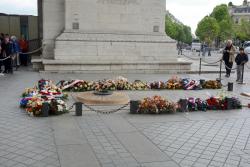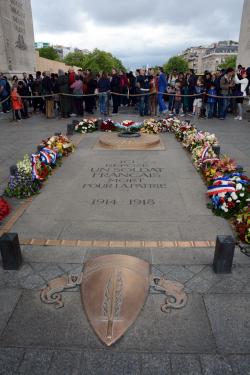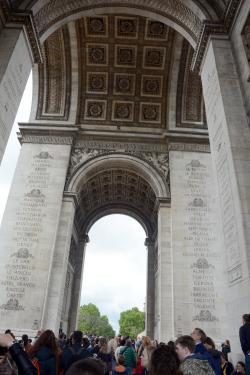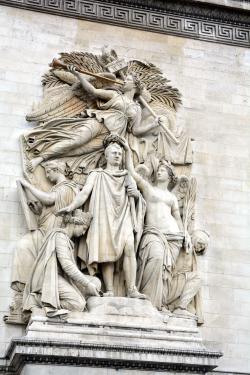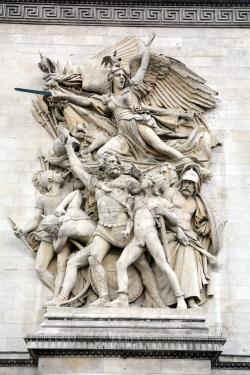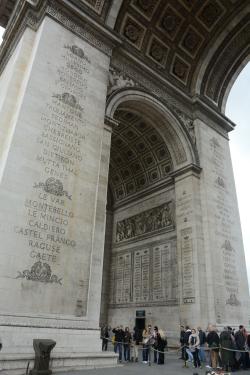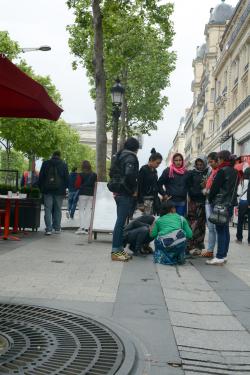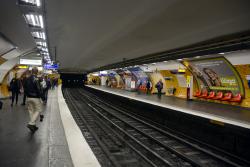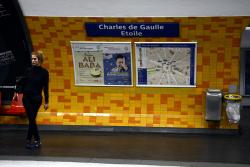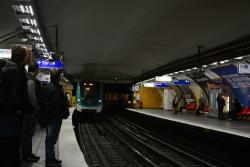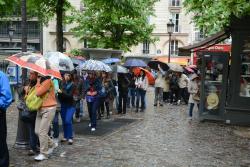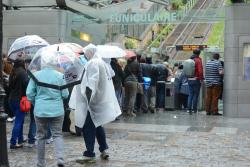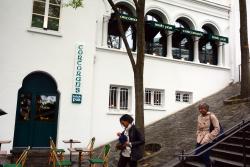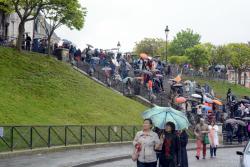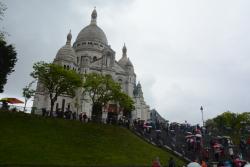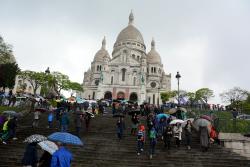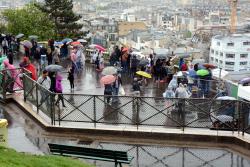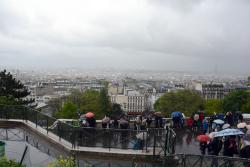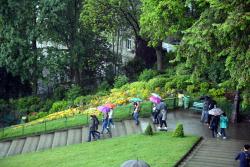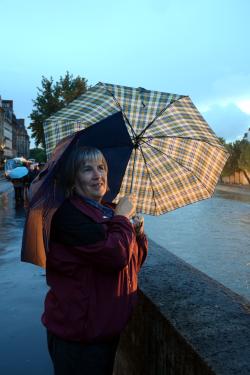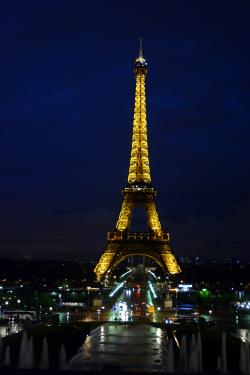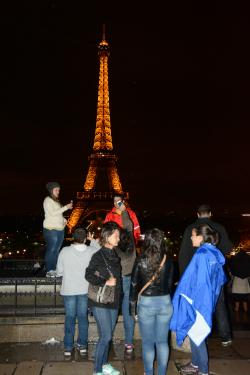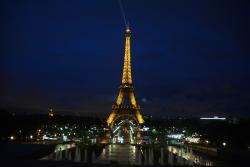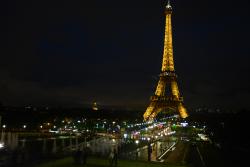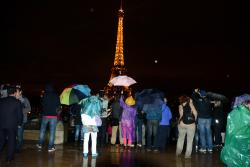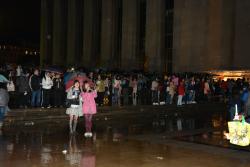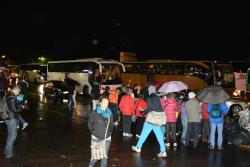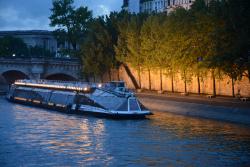Europe 14 - Day 6IntroductionToday was 1st May and we had been planning to visit the Palace of Versailles until I realised it waw closed on this day. So we decided to walk through the Tuileries Gardens to Place de la Concorde, take the Metro to Arc de Triomphe and then maybe visit Montmartre and the Basilica de Sacré Coeur. We took the Metro a few stops to the Tuilleries. This year's colour was purple, as every flower in the garden was a different shade of purple. Even at this relatively early hour there seemed to be a lot of people about - but the gardens are very popular. From Place de la Concorde we took the Metro to De Gaulle to visit the Arc de Triomphe only to find it closed. Of course - 1 May in France is a National Holiday. Jardin des TuileriesThis is a public garden located between the Louvre Museum and the Place de la Concorde in the 1st arrondissement of Paris. Created by Catherine de Medicis as the garden of the Tuileries Palace in 1564, it was eventually opened to the public in 1667, and became a public park after the French Revolution. In the 19th and 20th century, it was the place where Parisians celebrated, met, promenaded, and relaxed. Many still do this today. The Tuileries Garden has many fascinating sights, from flower beds, trees in regimental rows to a wonderful collection of marble sculptres. But one of the lesser-known fascinations is the mind games the Parisians play with the chairs. Scattered around the gardens are sturdy green metal chairs. They do not look too comfortable and in fact aren't but the Parisians love them. They line them up around the lakes and ponds and sit for hours. But there is much more to the chairs than this. Again, Tom's Guide to Paris explains it all: I want to talk about those damned chairs. There are two different kinds, and if you're new to this you won't notice and you will hence get screwed out of a more comfortable visit. Regulars, however, know the difference, and they train their hawk - like eyes on the ones that have armrests. It's not just about the armrests themselves - these chairs are engineered better, and there's something about the angle of the seat to the back that makes them more comfortable. OK, so much for the physics of this. The really interesting part is the sociology of the whole thing. Most people sitting in one of these parks that have the iron chairs will do everything they can to (1) get an armrest chair; and (2) get another, non-armrest chair to put their feet on. It's not just that they'll try to do this: watch the subtle way they go about rounding up their prized iron possessions. Since you can't legitimately deprive someone else of a place to sit just so you can rest your tired dogs, you have to be very crafty in arranging things so you get one of the good chairs to sit on and one of the cruddy ones for your feet. And people won't ever quite lunge for a good chair - they'll kind of walk nonchalantly toward one, increasing their speed if they see someone else aiming for the same chair. It's really a trip. Arc de TriompheAfter a pleasant stroll through the Jardin Tuileries, we found the Metro at COncorde and went to visit the Arc de Triomphe. We were still unaware that this was a public holiday (!) and so found it closed. At least I had been there before, but the bus loads of tourists that swarmed around, trying to open the locked doors must have been disappointed. Aslo saw a lot of Lily of the Valley for sale. At the beginning of the 20th century it became tradition in France to sell lily of the valley on international labour day, May 1, especially by labour organisations and private persons without paying sales tax (on that day only) as a symbol of spring.
Sacré CoeurWith all official buildings closed, we decided to head for Monmartre and the Basilica of Sacré Coeur. Unfortunately, so did everyone else in Paris. And it was so popular even the rain clouds decided to visit the place. Rainclouds plus crowds equals dangerous umbrellas.
The Eiffel Tower at nightSomething that is open every night is the view of the Eiffel Tower. A few years ago the owners of the Tower installed lighting and took the unprecedented step of claming the copyright on the image at night. This means that all photographs used for commercial gain must pay a royalty.
Back to previous day
Last updated: 12/09/2014 |
